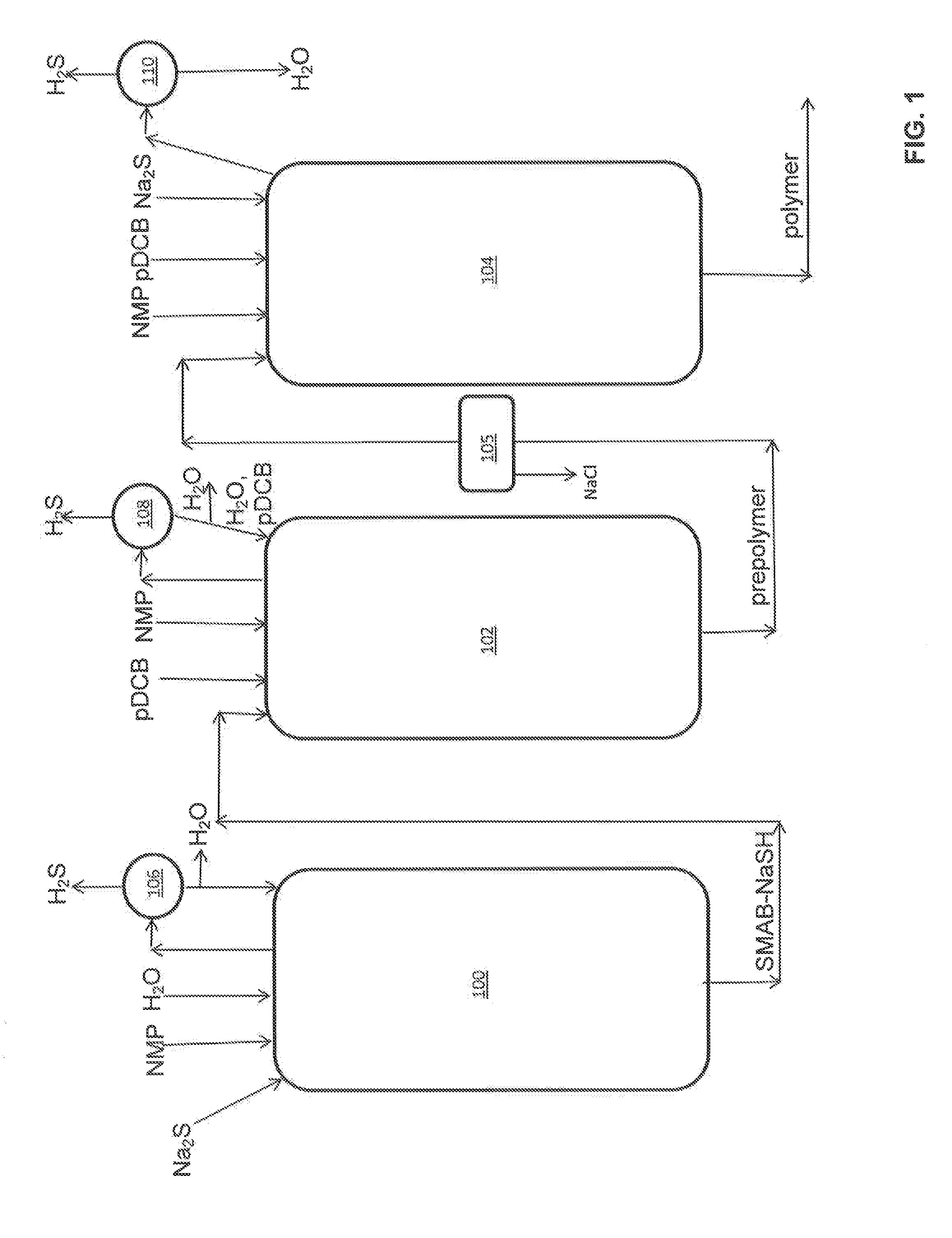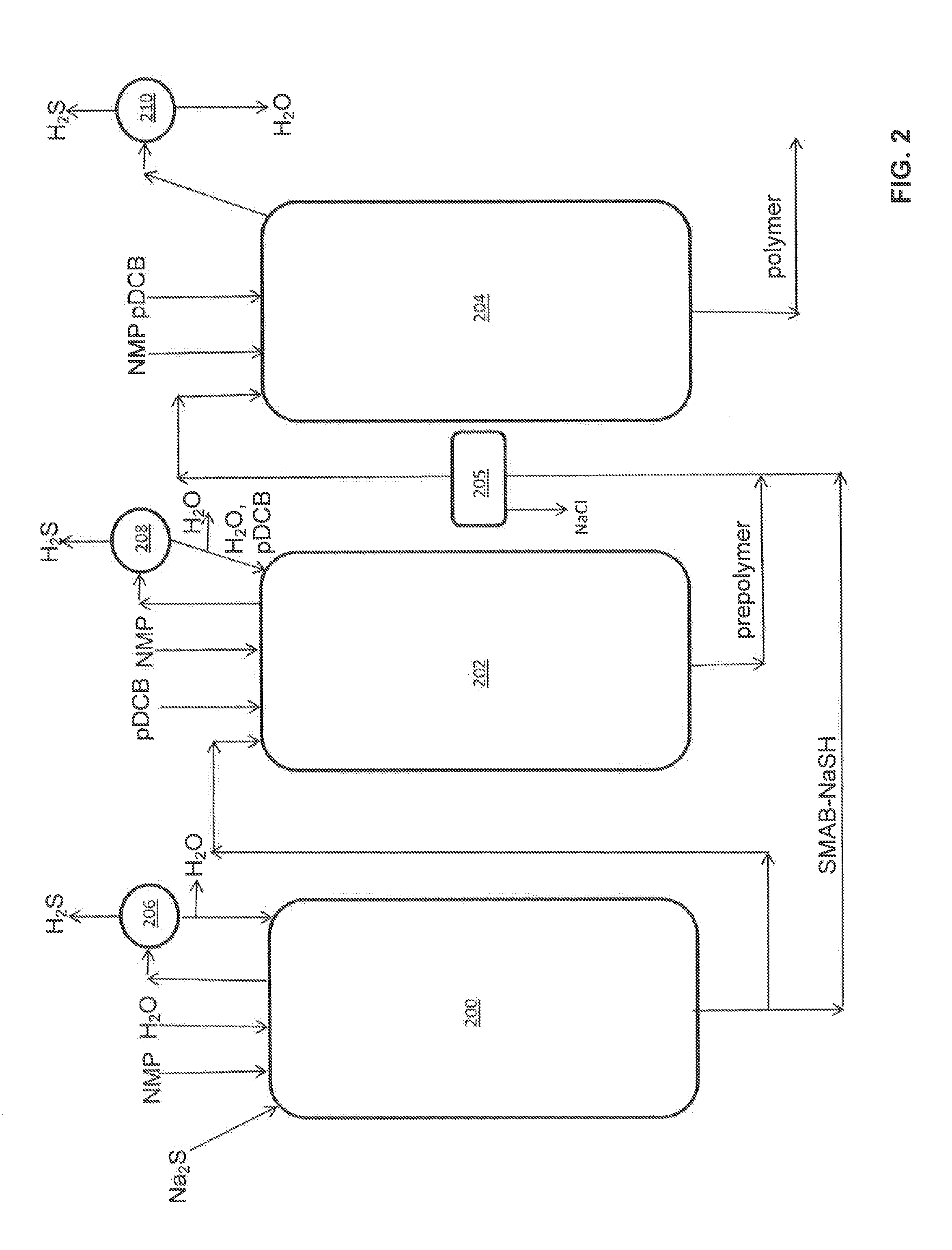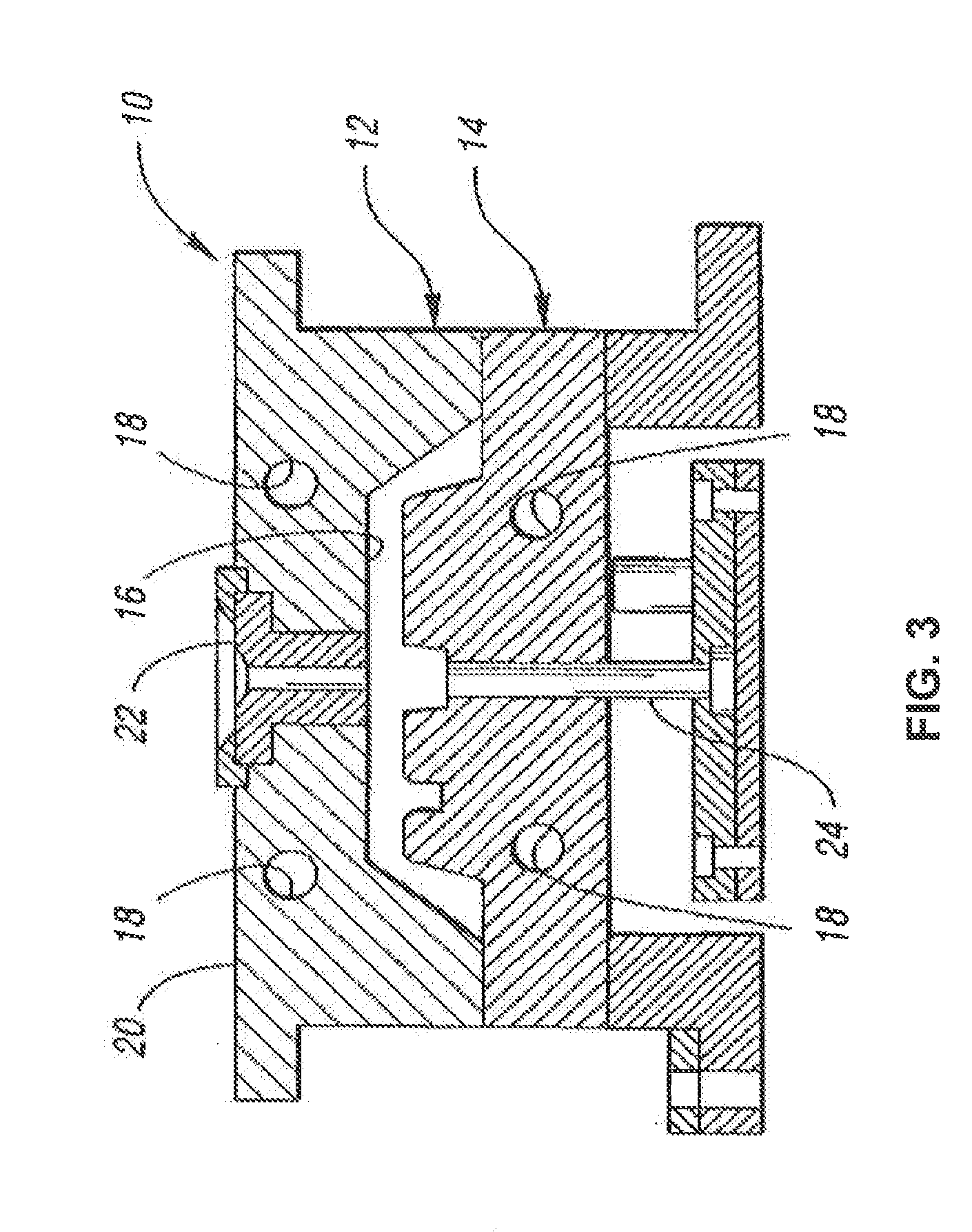Process for forming low halogen content polyarylene sulfides
a polyarylene sulfide, low halogen content technology, applied in the field of low halogen content polyarylene sulfide, can solve the problems of processing difficulty, add processing steps and costs to the formation process, etc., and achieve low halogen content, and increase the molecular weight of polyarylene sulfide.
- Summary
- Abstract
- Description
- Claims
- Application Information
AI Technical Summary
Benefits of technology
Problems solved by technology
Method used
Image
Examples
example
[0085]Several polyphenylene sulfide samples were prepared as follows:
SMAB-NaSH Preparation
[0086]A 2 liter Parr titanium reactor equipped with an addition funnel and a distillation apparatus was charged with 62.31 g of NaOH (95.93%, 1.49 moles), 319.74 g N-methylpyrrolidinone (NMP) and 22.11 g H2O. The reactor was sealed and purged with a slow stream of nitrogen gas. The mixture was stirred and the temperature raised to 100° C. After the target temperature was reached, molten NaSH hydrate (2 mol S) was added by means of a heated addition funnel. The temperature of the mixture was raised to 202° C. while a stream of distillate was continually collected. After the dehydration stage, the contents of the reactor was found to have a molar ratio of H2O to S equivalent to 1.5, and a molar ratio of NMP to S equivalent to 2.5. This SMAB-NaSH mixture was transferred to an addition funnel while molten and allowed to cool.
1st Stage Polymerization
PUM
| Property | Measurement | Unit |
|---|---|---|
| melt viscosity | aaaaa | aaaaa |
| melt viscosity | aaaaa | aaaaa |
| temperature | aaaaa | aaaaa |
Abstract
Description
Claims
Application Information
 Login to View More
Login to View More - R&D
- Intellectual Property
- Life Sciences
- Materials
- Tech Scout
- Unparalleled Data Quality
- Higher Quality Content
- 60% Fewer Hallucinations
Browse by: Latest US Patents, China's latest patents, Technical Efficacy Thesaurus, Application Domain, Technology Topic, Popular Technical Reports.
© 2025 PatSnap. All rights reserved.Legal|Privacy policy|Modern Slavery Act Transparency Statement|Sitemap|About US| Contact US: help@patsnap.com



